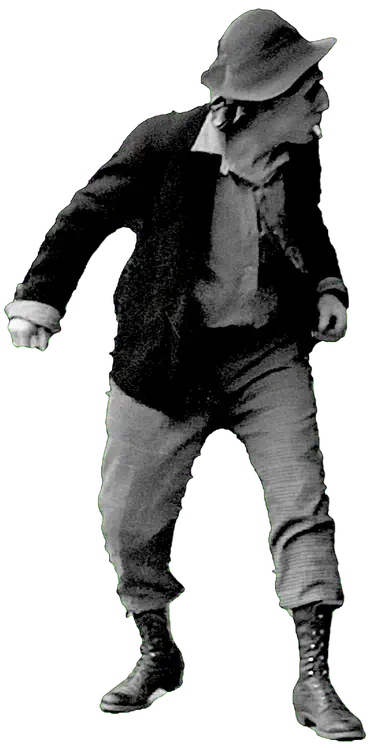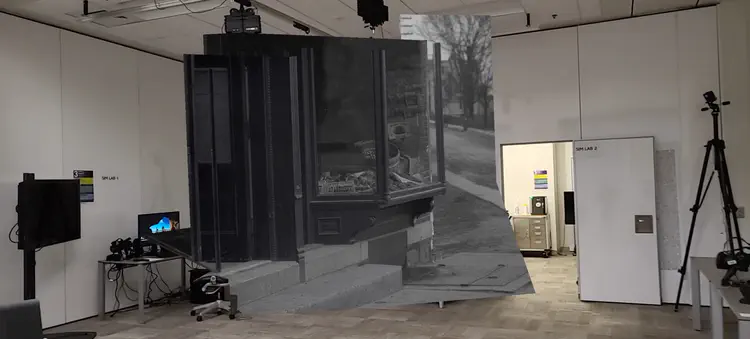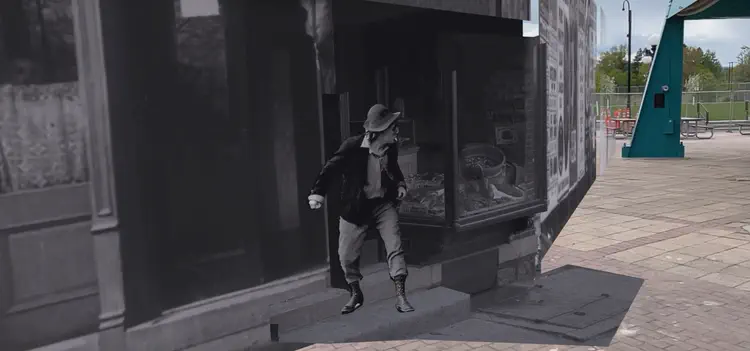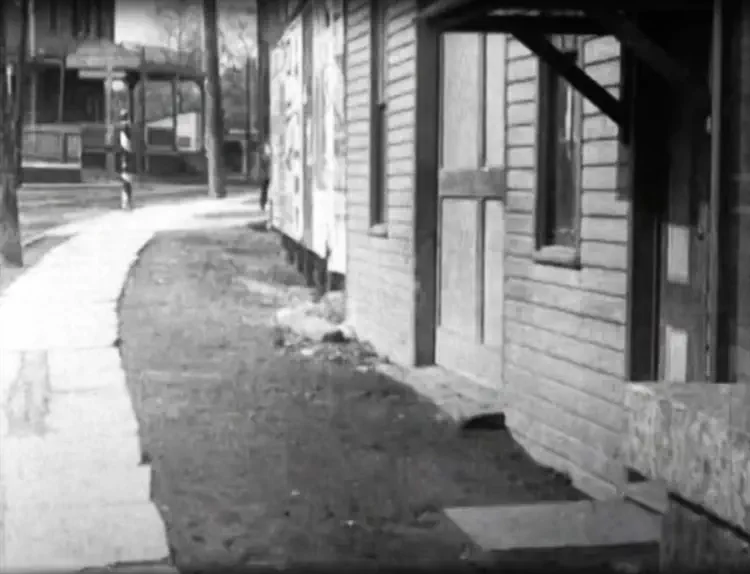Silent Film AR
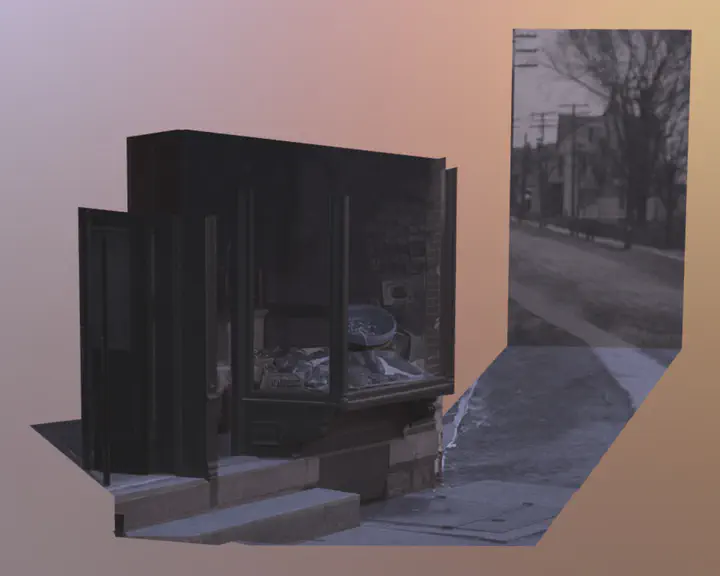
Recent collaborations with film scholars have resulted in first steps towards walking into historic silent films using Augmented Reality technologies. Film frames are used to construct three-dimensional architectural geometry suitable for 3D interaction.
The storefront (and building) below appear in numerous films, and are shown from different viewing angles. Our initial work was based on this single frame from the 1909 film, The Cord of Life:
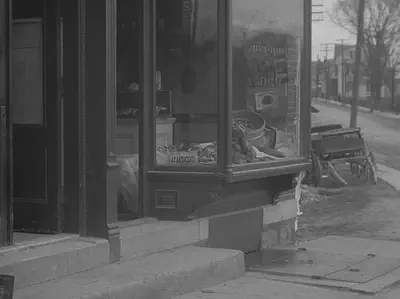
The video below shows a 3D object created from that frame and can be viewed using AR in any environment:
Frames from other films showing adjacent parts of the same street block were next identified, then merged into the reconstruction of this historic site:

This block of storefronts can be placed anywhere like a hologram that can be seen by looking through a smartphone screen, like a window into the past.
For the video recorded below, the buildings (and an actor) were placed and viewed in a park in Missoula, Montana:
The construction process being used for this virtual scene relies on straightforward 3D modeling processes that can be learned by students studying video game design or 3d animation skills. The approach relies on virtual projection mapping, analogous to the real-world use of light to project film onto surfaces.
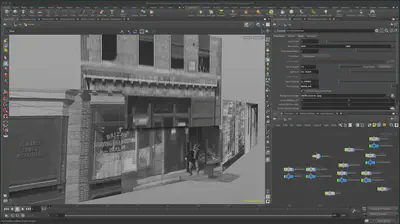
Web technology is being used so that one can just click a link, type a URL, or scan a QR code to see this experience, instead of needing to download and install an app. The use of open source frameworks can make the work a bit easier to share with a more diverse group of people.
For example, during a remote presentation of this work at the Women and the Silent Screen conference (Columbia University, New York, June 03, 2022) one participant scanned the projected QR code, then placed the virtual model of the street on a table of front of them (appropriately scaled to fit in the auditorium):
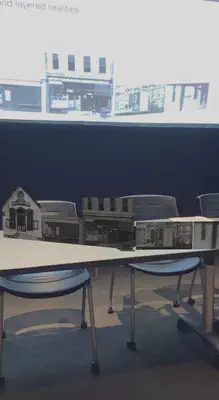
The work started from Library of Congress paper print collection frames from The Cord of Life that are being restored though the work of the Film Preservation Society.
Frames from three additional films have also been used so far, including two from The Curtain Pole, one from Billy’s Séance, and one from The Salvation Army Lass.
Chris Milewski’s Mary Pickford web site was a helpful resource, listing films shot in Fort Lee and corresponding shot locations.
This research has been conducted as part of The Media Ecology Project (MEP), a digital humanities research initiative directed by Mark Williams and John Bell at Dartmouth College, specifically in relation to an NEH Digital Humanities Advancement Grant (Level III) titled “Understanding Visual Culture Through Silent Film Collections”. For this grant, Williams has brought together, for collaborative research purposes, a wide spectrum of early cinema collections, publications, and historical metadata for scholars, archivists, technicians, librarians, and artists to create a virtuous cycle of new interdisciplinary scholarship about archival media that adds value back to participating archives.
AR Project Production:
- Matthew Lewis, OSU, Design/ACCAD/TDAI (2D, 3D, AR, video production)
- Noah Hensley, Dartmouth student (frame painting and actor extraction)
- Lauren Spencer, Dartmouth student (film research)
Film Frames and Additional Images Provided By:
- Mark Williams and John Bell, Media Ecology Project, Dartmouth
- Tracey Goessel, Film Preservation Society (FPS)
- Dennis Doros, Milestone Films
- Richard Koszarski, Rutgers, Fort Lee Film Commission
Additional images:
